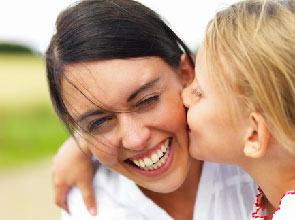Nurses are key to providing effective education. The nurse’s role as a patient teacher has changed dramatically with shorter acute care stays and more community based care. As medical treatment has become more complex and technology has become available, patients and their families manage a variety of health conditions at home that previously would have been managed in a hospital setting. Increasingly, patients are becoming partners with health professionals in learning self-management skills. Table 1 outlines the characteristics of a health care self-management model that can be used in all health care settings.
 Patient education is one of the most crucial aspects of nursing practice. When nurses connect with patients who are ready to learn, patients‘ lives can be transformed.6 As a result of patient teaching, symptoms lessen, anxiety decreases, readmission rates decrease, quality of life increases, and knowledge of disease and treatment expands. Nurses teach in a wide range of service settings, including public health centers, hospitals, homes, clinics, physicians‘ offices, schools, industries, extended care facilities, adult homes, penal institutions, and the military. Through skills-oriented teaching, patients learn how to change dressings, give and manage their own medications, perform exercises, and participate in activities that increase independence and functioning. Through health teaching aimed at changing health behaviors, patients learn how to prevent disease and promote health.
Patient education is one of the most crucial aspects of nursing practice. When nurses connect with patients who are ready to learn, patients‘ lives can be transformed.6 As a result of patient teaching, symptoms lessen, anxiety decreases, readmission rates decrease, quality of life increases, and knowledge of disease and treatment expands. Nurses teach in a wide range of service settings, including public health centers, hospitals, homes, clinics, physicians‘ offices, schools, industries, extended care facilities, adult homes, penal institutions, and the military. Through skills-oriented teaching, patients learn how to change dressings, give and manage their own medications, perform exercises, and participate in activities that increase independence and functioning. Through health teaching aimed at changing health behaviors, patients learn how to prevent disease and promote health.
Table 1
|
Characteristics of a Patient |
Source: Adapted from: Lorig, K. (1996). Patient Education: A Practical Approach. Thousands Oaks, Calif.: Sage Publications, xiii-xiv. |
The accountability for patient teaching lies within the scope of practice of every nurse. Each nurse’s legal responsibility to teach patients is outlined in State Nursing Practice Acts. The vital teaching role of nurses is also emphasized in documents published by the American Nurses Association and by many nursing specialty organizations. The public depends on nurses to help them understand how to manage health care problems. If a nurse fails to provide required patient education, and the patient can show that an injury resulted from a lack of that information or instruction, the nurse could be sued for negligence.
Nurses who fail to provide patient teaching, or who don’t document the teaching they provide, including the response of the patient to teaching, increase their liability risk. Several cases have been tried across the country evaluating the nurse’s liability for health teaching. Those cases that have been decided in favor of the nurse are those that have had strong documentation.
The importance of health teaching as a part of nursing practice has been recognized for years. However, the nursing literature continues to indicate that there is both confusion and lack of preparation for teaching within the nursing profession. If nurses are legally and professionally expected to teach and are committed to this role, they must be well prepared.5 This course is designed to provide nurses with guidelines and techniques that will help them become more knowledgeable and confident in providing health teaching.
Patient / family education standards